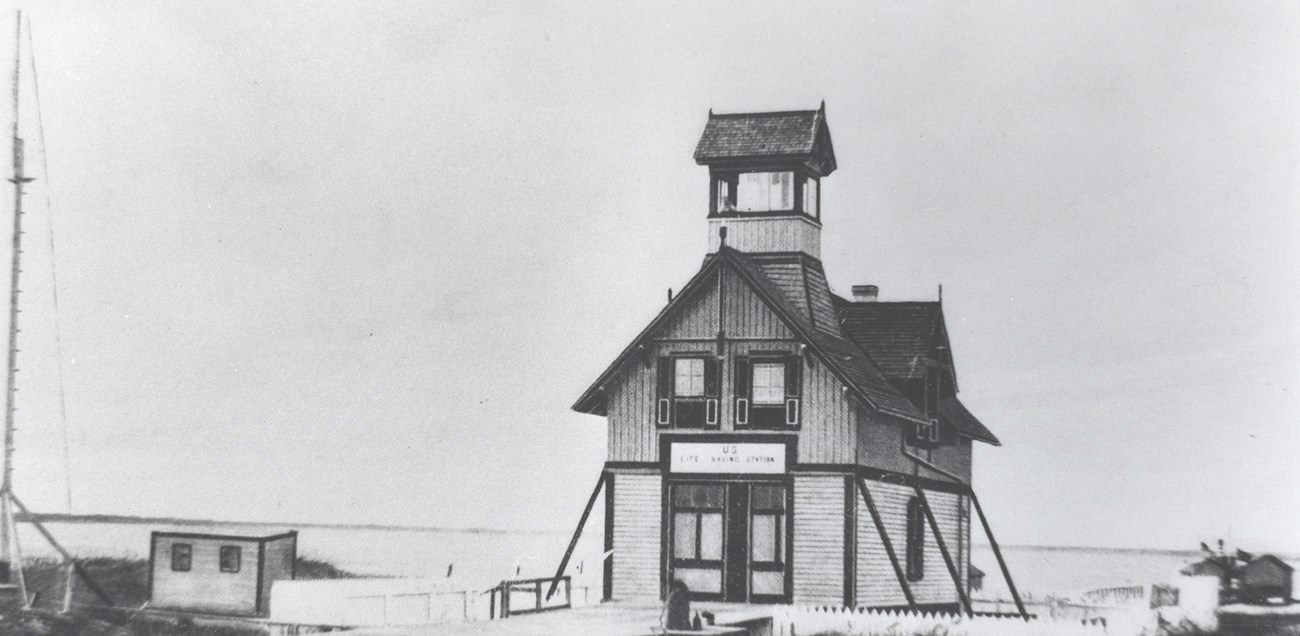
NPS Collection In 1885, the US Life-Saving Service constructed Florida’s first two life-saving stations, one at Jupiter Inlet and one on Santa Rosa Island. Architect J. Lake Parkinson designed the Santa Rosa Life-Saving Station, similar to at least 23 other stations constructed between 1882 and 1891. 

Left image
Right image
McKinnon, Jennifer F. “The Archaeology of Florida’s US Life –Saving Service houses of Refuge and Life- Saving Stations.” MA Thesis. Florida State University. 2010.
Noble, Dennis L. A Legacy: The United States Life-Saving Service. USlifesavingservice.org. http://uslife- savingservice.org/about-us/history-of-the-uslss/ “The Hurricane at Santa Rosa Island.” Pensacola News Journal 24 Oct 1906. Thurlow, Sandra and Timothy Dring. US Life-saving Service: Florida’s East Coast. Charlestown, SC: Arcadia Publishing, 2016. U.S. Coast Guard. “Station Santa Rosa, Florida.” US Coast Guard History Program. https://media.defense.gov/2017/Jul/04/2001772941/-1/-1/0/SANTAROSA.PDF US Life-Saving Service. Annual report of the operations of the United States Life-Saving Service for the fiscal year ended June 30 1886. Washington, DC: Government Printing Office, 1887. https://media.defense.gov/2017/Jul/10/2001775778/-1/-1/0/USLSSANNUALREPORT1886GOOGLE.PDF US Life-Saving Service. Annual report of the operations of the United States Life-Saving Service for the fiscal year ended June 30 1909. Washington, DC: Government Printing Office, 1910. https://babel.hathitrust.org/cgi/pt?id=osu.32435062866884;view=1up;seq=297 |
Last updated: February 13, 2025
